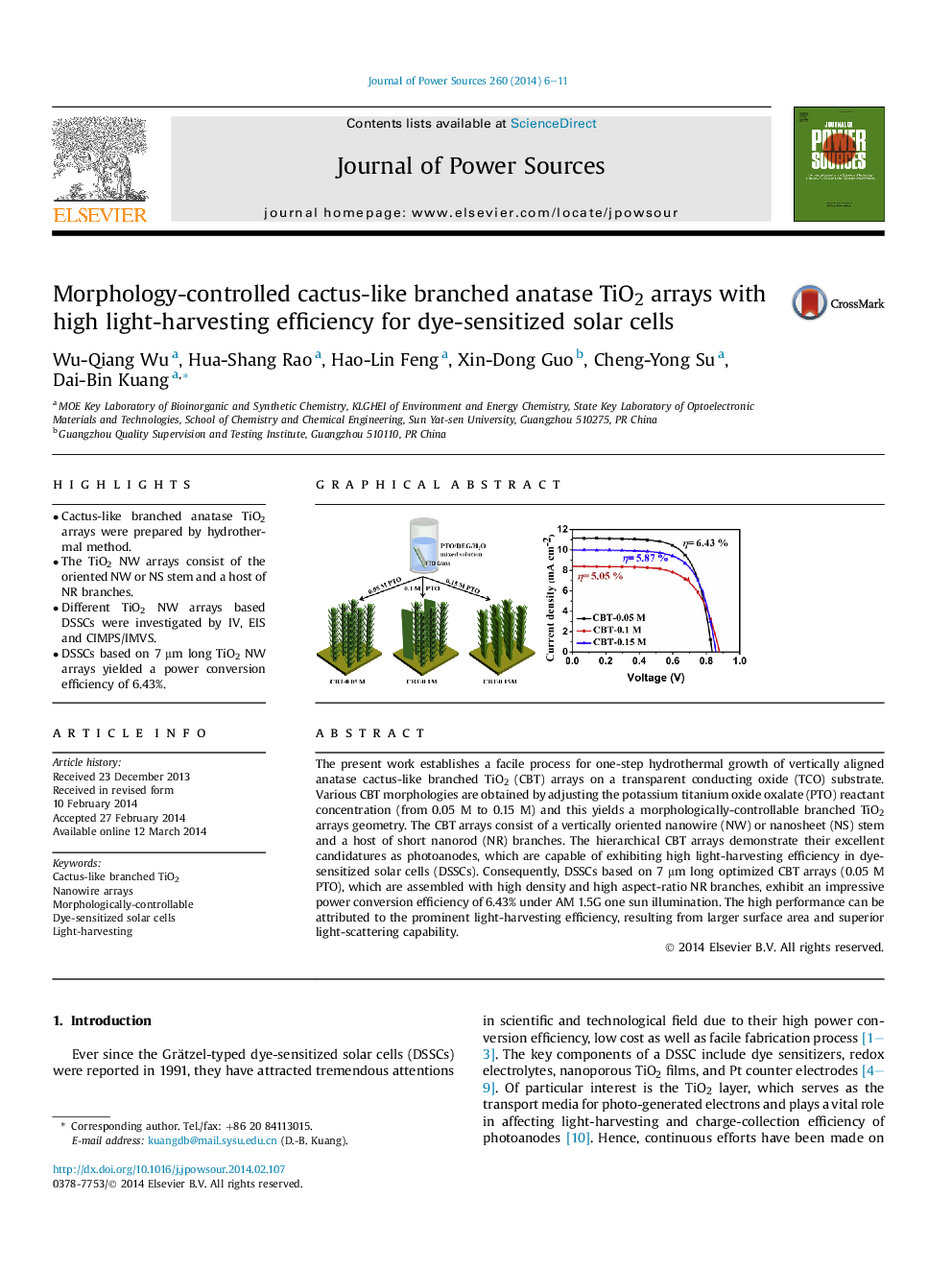| Article ID | Journal | Published Year | Pages | File Type |
|---|---|---|---|---|
| 1284167 | Journal of Power Sources | 2014 | 6 Pages |
•Cactus-like branched anatase TiO2 arrays were prepared by hydrothermal method.•The TiO2 NW arrays consist of the oriented NW or NS stem and a host of NR branches.•Different TiO2 NW arrays based DSSCs were investigated by IV, EIS and CIMPS/IMVS.•DSSCs based on 7 μm long TiO2 NW arrays yielded a power conversion efficiency of 6.43%.
The present work establishes a facile process for one-step hydrothermal growth of vertically aligned anatase cactus-like branched TiO2 (CBT) arrays on a transparent conducting oxide (TCO) substrate. Various CBT morphologies are obtained by adjusting the potassium titanium oxide oxalate (PTO) reactant concentration (from 0.05 M to 0.15 M) and this yields a morphologically-controllable branched TiO2 arrays geometry. The CBT arrays consist of a vertically oriented nanowire (NW) or nanosheet (NS) stem and a host of short nanorod (NR) branches. The hierarchical CBT arrays demonstrate their excellent candidatures as photoanodes, which are capable of exhibiting high light-harvesting efficiency in dye-sensitized solar cells (DSSCs). Consequently, DSSCs based on 7 μm long optimized CBT arrays (0.05 M PTO), which are assembled with high density and high aspect-ratio NR branches, exhibit an impressive power conversion efficiency of 6.43% under AM 1.5G one sun illumination. The high performance can be attributed to the prominent light-harvesting efficiency, resulting from larger surface area and superior light-scattering capability.
Graphical abstractFigure optionsDownload full-size imageDownload as PowerPoint slide
